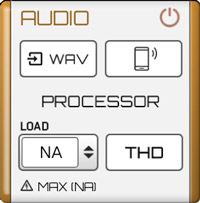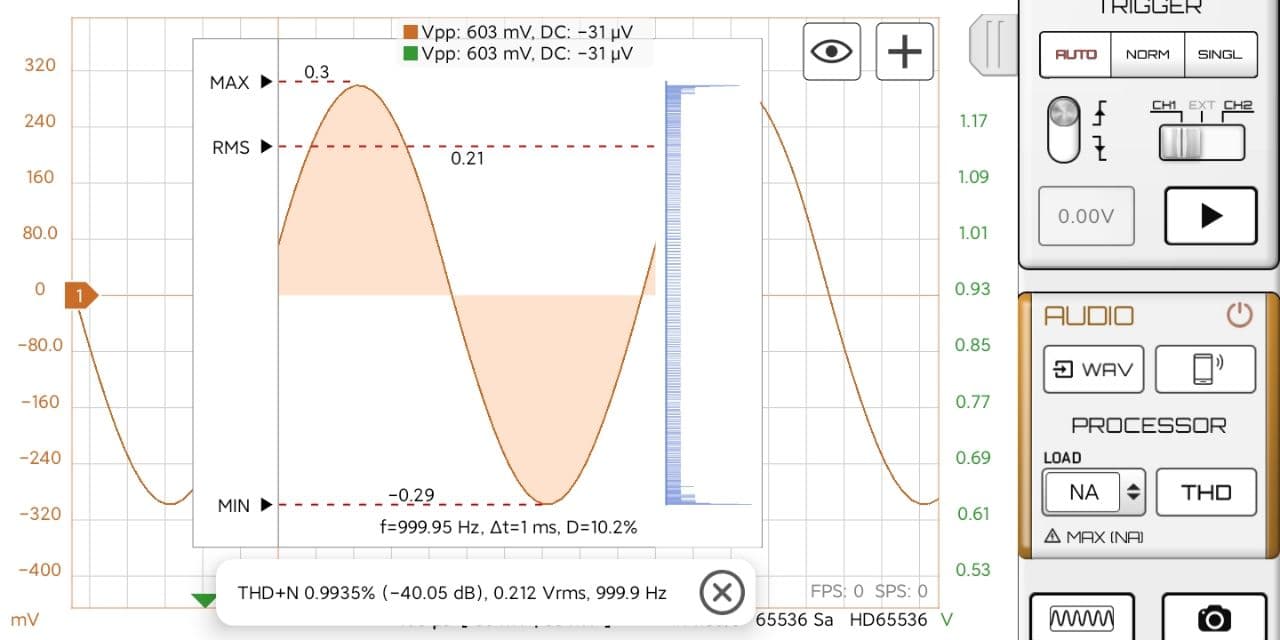Audio Module Intro
Before You Start
This Module license is in addition to the basic HScope license for the supported oscilloscope model.
What You Can Do
The Audio Output Module allow to:
1. Import WAV Files
WAV Files can be imported, analysed, processed and exported in HScope.

2. Hear on the Phone the Signal from the Oscilloscope
The oscilloscope signal can be sent to the phone speaker through real-time data streaming. While hearing the signal you can still analyse the signal with the other functions. Since the oscilloscope can acquire low voltages this function is useful to check low signals in initial amplifier stages.
Note: this function is not supported by all the oscilloscopes. Check your model under the oscilloscopes list.
3. Compute the Output Power of an Audio Amplifier
The Audio Module can compute the output Power (RMS Power) of a Audio Amplifier by connecting the probe to the speaker connections and by selecting the impedance of the speaker in HScope. The maximum power is indicated in the Audio module panel and depends from the oscilloscope maximum input voltage. For increasing it, set a higher oscilloscope input voltage or use a x10 / x20 / x100 probe. The result is shown in real-time on the graph under the RMS value. For this measure you should input a sine wave in the amplifier. This signal could be produced by a portable MP3 player or by another phone App.
Pay attention: the sound generator cannot be the same phone running HScope since it cannot share the same GND of the oscilloscope.
Pay attention: the output of an audio amplifier could have high voltages. The GND of the probe should be connected to the GND of the amplifier or to the speaker wire connected to the GND. If both speaker wires are floating (neither one on GND), then the oscilloscope GND and phone box could be at a dangerous voltage. In this case you may look to some insulation solution like to use capacitors in series both to the probe tip and to the probe GND. (see EEVBLOG)
4. Compute the THD of the Signal
For pure sinusoidal signals you can compute the Total Harmonic Distortion.

5. Input data from Microphone
You can acquire data from microphone input. Available only on phones with at least Android 6.0.
Resources
- Audio Module demo on Youtube Playlist